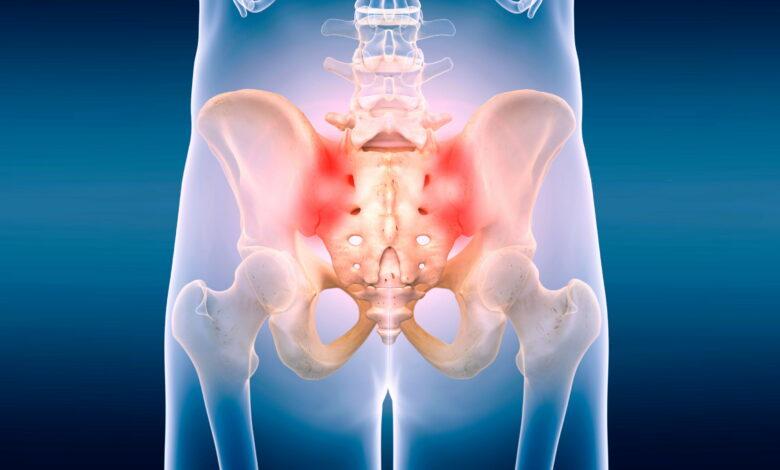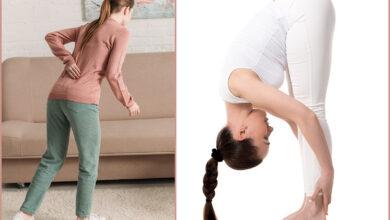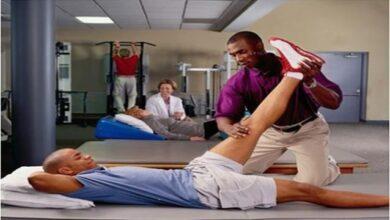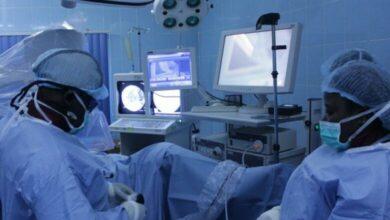
Top 15 Signs and Effect of Sacroiliac Joint Dysfunction
Signs and Effect of Sacroiliac Joint Dysfunction – The sacroiliac (SI) joints are located where the spine and pelvis connect, one on each side of the sacrum. These small joints provide stability for the spine and absorb shock between the upper body and the lower body when you walk or run. SI joint dysfunction occurs when these joints become irritated or inflamed, causing pain and mobility issues. Unfortunately, SI joint pain often gets overlooked or misdiagnosed because it can mimic other common causes of low back pain. Information Guide Nigeria
Knowing the signs and symptoms can help you identify if your back pain is coming from your SI joints.
👉 Relocate to Canada Today!
Live, Study and Work in Canada. No Payment is Required! Hurry Now click here to Apply >> Immigrate to CanadaRead Also: Top 15 Causes of Low Back Pain in Nigeria
Here are 15 indicators that you may have sacroiliac joint dysfunction:
1. Pain in the Low Back or Buttocks
The most common symptom of SI joint dysfunction is pain in the low back or buttocks. It often feels like a dull, deep ache in the back, sides, or gluteal muscles. The pain may radiate down into the legs as well. Unlike muscle strains which cause sharp, sudden pain, SI joint pain comes on gradually and worsens over time. The discomfort is typically worse when sitting, standing, or weight-bearing for too long. Signs and Effect of Sacroiliac Joint Dysfunction
2. Pain When Climbing Stairs
Going upstairs requires bending and lifting your weight with each step, placing stress on the SI joints. People with SI joint problems often report increased pain, popping, or discomfort in the back/buttocks when climbing stairs. The same discomfort may occur when stepping up curbs or inclines.
3. Pain After Sitting or Riding in a Car
Prolonged sitting is hard on the SI joints, especially if you have pre-existing dysfunction. Sitting for long stretches in classrooms, at your work desk, or in a car can provoke stiffness and achiness. Changing positions frequently while sitting can help minimize pain.
Read Also: Top 15 Physiotherapy Career Prospects in Nigeria
4. Pain When Getting Up From Seated Position
If your SI joints are inflamed, they may feel especially stiff and painful after sitting for a while. You’ll likely notice increased discomfort, tightness, and difficulty straightening up fully when getting up from a chair, car seat, or sitting on the floor. 30 Best Online Bachelor’s Degree Programs
5. Discomfort When Standing or Walking
Once you’re up and moving around, SI joint pain may ease somewhat thanks to the joints getting light mobilization. However, standing or walking for long periods can also aggravate the SI joints. Discomfort often flares up when you’re standing in line, strolling through a museum, or doing extended walking exercise.
6. Lower Body Pain That Feels Worse on One Side
Since you have two separate SI joints, dysfunction often impacts just one side. This can make the discomfort quite lateralized. You may feel pronounced pain on either your left or right SI area and gluteal region versus the other side. The achiness tends to be more localized versus widespread. 10 Best Free Fine Arts Online Courses
👉 Relocate to Canada Today!
Live, Study and Work in Canada. No Payment is Required! Hurry Now click here to Apply >> Immigrate to Canada7. Groin Pain
A less common symptom of SI joint dysfunction is groin pain. If the inflammation spreads, it can irritate nerves that run through the hip and pelvic region. This causes pain that radiates into the inner thighs and groin area. The discomfort may also shoot down the back of the legs.
Read Also: Top 15 Antihypertensive Medications
8. Clicking’ Sensation in the Pelvis
When your SI joints move, you may feel a ‘clicking’ or ‘popping’ sensation in your lower back/pelvis. This occurs when the inflamed joint surfaces rub against each other abnormally. While not necessarily painful, it indicates misalignment and instability in the SI joints. NYSC Portal
9. Reduced Mobility and Flexibility
Chronic SI joint inflammation can make your back feel stiff and inflexible. Bending to tie your shoes, looking over your shoulder, and twisting your torso may be limited and uncomfortable. Your body unconsciously avoids movements that put stress on the irritated SI joints. Over time, reduced mobility leads to even tighter joints and muscles.
10. Muscle Spasms
The muscles surrounding the SI joints often tense up in response to the joint inflammation. This causes painful muscle spasms and knots, especially in the lower back, glutes, hips and pelvis. The involuntary contractions are the body’s way of splinting and protecting the unstable joints. JAMB Portal
11. Hip, Leg or Foot Pain
When inflamed SI joints radiate pain, it often shoots down into the hip, legs and feet. You may feel shooting or radiating discomfort along the back of the leg, into the hamstrings, or down to the calves. Numbness, tingling and weakness in the legs can also occur if nerves become compressed.
Read Also: Top 10 Potassium-Sparing Diuretics
12. Urinary Symptoms
In some cases, SI joint dysfunction irritates the nerves running through the pelvis that control urinary and bladder function. This can cause urinary urgency and frequency, loss of bladder control, painful urination and increased nighttime bathroom trips. JAMB Result
13. Difficulty Lying on Your Side
Lying on your side can put uneven pressure on the SI joints, triggering discomfort. You may notice increased pain when lying on either side versus your back. Finding a comfortable sleeping position can be challenging with SI joint problems. The best position is often lying on your back with a pillow under your knees. 200 romantic love message for her
14. Relief From Gentle Movement
While vigorous activity and high-impact exercise can worsen pain, gentle movements may actually soothe SI joint inflammation. Light walking, stretching, rocking the hips, pelvic tilts and other slow motions can help take pressure off the joints and loosen tightened muscles. 105 good morning messages
15. Positive Fortin Finger Test
Healthcare providers can diagnose SI joint dysfunction by performing a physical exam and asking about your symptoms. A positive Fortin finger test is often used – this involves pushing down on one of your posterior superior iliac spines (dimples above your buttocks) to see if it elicits localized low back pain.
Read Also: Which Hospital is Best for Urology in Nigeria?
Conclusion
If you suspect your back pain is coming from your SI joints, make an appointment with your doctor. In addition to a physical exam, imaging tests like X-rays or MRI scans may be used to assess the joints. Once diagnosed, there are several nonsurgical treatment options that can ease discomfort and help stabilize the pelvis. These include anti-inflammatory medications, SI joint injections, physical therapy, bracing, massage, chiropractic adjustments and gentler forms of exercise. Surgery may be an option for severe cases that don’t improve with conservative treatment.
Don’t ignore lingering back and hip pain – get it evaluated to determine if SI joint dysfunction is the culprit. Proper diagnosis and treatment can help resolve your symptoms and get you moving comfortably again. Paying attention to the signals from your body and addressing issues early is crucial for protecting your joints and preventing progression.
Check JAMB RESULT
Check and Confirm: How much is Dollar to Naira







